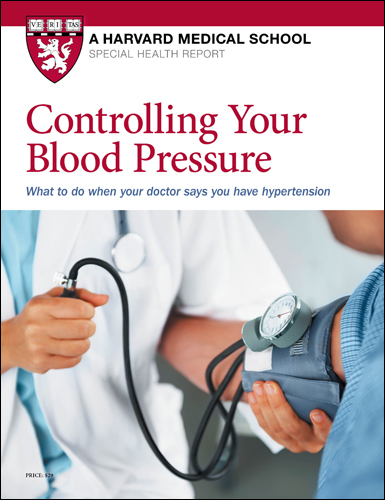Reading the new blood pressure guidelines
The definition for what is considered high blood pressure has been tightened. Here's what you need to know.
- Reviewed by Howard E. LeWine, MD, Chief Medical Editor, Harvard Health Publishing; Editorial Advisory Board Member, Harvard Health Publishing

If you didn't have high blood pressure before, there's a good chance you do now.
In 2017, new guidelines from the American Heart Association, the American College of Cardiology, and nine other health organizations lowered the numbers for the diagnosis of hypertension (high blood pressure) to 130/80 millimeters of mercury (mm Hg) and higher for all adults. The previous guidelines set the threshold at 140/90 mm Hg for people younger than age 65 and 150/80 mm Hg for those ages 65 and older.
Behind the numbers
Blood pressure guidelines are not updated at regular intervals. Instead, they are changed when sufficient new evidence suggests the old ones weren't accurate or relevant anymore. The goal now with the more recent guidelines is to help people address high blood pressure — and the problems that may accompany it like heart attack and stroke — much earlier.
The new guidelines stem from the 2017 results of the Systolic Blood Pressure Intervention Trial (SPRINT), which studied more than 9,000 adults ages 50 and older who had systolic blood pressure (the top number in a reading) of 130 mm Hg or higher and at least one risk factor for cardiovascular disease. The study's aim was to find out whether treating blood pressure to lower the systolic number to 120 mm Hg or less was superior to the standard target of 140 mm Hg or less. The results found that targeting a systolic pressure of no more than 120 mm Hg reduced the chance of heart attacks, heart failure, or stroke over a three-year period.
More than blood pressure
The updated guidelines have other changes, too. First, they don't offer different recommendations for people younger or older than age 65. This is because the SPRINT study looked at all patients regardless of age and didn't break down groups above or below a certain age.
The guidelines also redefined the various categories of hypertension. It eliminated the category of prehypertension, which had been defined as systolic blood pressure of 120 to 139 mm Hg or diastolic pressure (the lower number in a reading) of 80 to 89 mm Hg. Instead, people with those readings are now categorized as having either elevated pressure (120 to 129 systolic and less than 80 diastolic) or Stage 1 hypertension (130 to 139 systolic or 80 to 89 diastolic).
A reading of 140/90 mm Hg or higher is considered Stage 2 hypertension, and anything higher than 180/120 mm Hg is hypertensive crisis.
Check your blood pressure at homeThe new guidelines note that blood pressure should be measured on a regular basis and encourage people to use home blood pressure monitors. Monitors can range from $40 to $100 on average, but your insurance may cover part or all of the cost. Measure your blood pressure a few times a week and see your doctor if you notice any significant changes. Here are some tips on how to choose and use a monitor. Choosing
Using
|
What should you do?
If you had previously been diagnosed with high blood pressure, the current guidelines don't affect you too much, as you still need to continue your efforts to lower it through medication, diet, exercise, and weight loss. However, based on the newer study results that led to guideline changes, your doctor may recommend lowering your blood pressure goal.
The larger issue is that many people ages 65 and older suddenly find themselves diagnosed with elevated or high blood pressure, since the new normal is a whopping 20 points lower than before. Does this mean an automatic prescription for blood pressure drugs? Not necessarily.
People should consult with their doctor about first adjusting lifestyle habits, such as getting more exercise, losing weight, and following a heart-healthy diet like the DASH or Mediterranean diet.
Medications are recommended to lower blood pressure in Stage 1 hypertension if you've already had a heart attack or stroke or if your 10-year risk of a heart attack is higher than 10%. (You can find your 10-year estimation at www.cvriskcalculator.com.) For others with Stage 1 hypertension, the first action is to take lifestyle changes seriously.
Overall, the updated guidelines may help people get more involved with monitoring their blood pressure, which can hopefully prevent complications from hypertension.
About the Reviewer

Howard E. LeWine, MD, Chief Medical Editor, Harvard Health Publishing; Editorial Advisory Board Member, Harvard Health Publishing
Disclaimer:
As a service to our readers, Harvard Health Publishing provides access to our library of archived content. Please note the date of last review or update on all articles.
No content on this site, regardless of date, should ever be used as a substitute for direct medical advice from your doctor or other qualified clinician.













